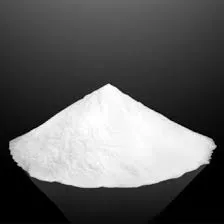
Nov . 08, 2024 11:53 Back to list
Exploring the Properties and Applications of Hydroxyethyl Cellulose in Various Industries
Hydroxyethyl Cellulose Properties, Applications, and Importance
Hydroxyethyl cellulose (HEC) is a non-ionic, water-soluble polymer derived from cellulose. It is produced through the chemical modification of cellulose, where ethylene oxide is reacted with cellulose to introduce hydroxyethyl groups into the polymer structure. This modification enhances the solubility and functionality of cellulose, making HEC a versatile ingredient used in various industries, including pharmaceuticals, cosmetics, construction, and food processing.
Properties of Hydroxyethyl Cellulose
One of the most remarkable properties of HEC is its ability to dissolve in water, forming a clear, viscous solution. The degree of substitution (the number of hydroxyethyl groups added to the cellulose backbone) can be manipulated to achieve different viscosity levels, which can be tailored to specific applications. HEC is available in various grades, characterized by its viscosity range and solubility profile, making it suitable for diverse formulations.
HEC is also known for its excellent thickening, emulsifying, and stabilizing properties. It exhibits pseudoplastic behavior, meaning that its viscosity decreases under shear stress, making it ideal for applications where easy application and processing are critical. Moreover, HEC is chemically stable, resistant to high temperatures, and compatible with a wide range of ingredients, further expanding its usability.
Applications of Hydroxyethyl Cellulose
1. Pharmaceuticals In the pharmaceutical industry, HEC is widely used as a thickening agent in topical formulations, drug suspensions, and gels. Its ability to enhance the bioavailability of active ingredients while providing a smooth texture makes it a preferred choice in ointments and creams. HEC is also employed as a binder in tablet formulations and as a stabilizer in liquid preparations.
hydroxyethyl cellulose

2. Cosmetics and Personal Care Products The cosmetic industry utilizes HEC for its thickening and film-forming properties. It is found in lotions, shampoos, conditioners, and gels, where it helps improve texture and stability while providing a pleasant application experience. Additionally, HEC enhances product appearance by preventing separation of ingredients and providing a uniform consistency.
3. Construction HEC is an essential additive in the construction industry, particularly in the formulation of cement-based products, such as tiles and grouts. It improves workability, water retention, and adhesion, which are critical for construction materials. HEC ensures that these mixtures maintain optimal consistency during application and enhances their durability once cured.
4. Food Industry In food processing, HEC serves as a thickening agent and stabilizer in various products, including sauces, dressings, and dairy products. It improves texture and mouthfeel while preventing the separation of ingredients, thus ensuring a consistent product quality. Furthermore, as a food additive, HEC is recognized as safe for consumption by regulatory authorities.
Importance of Hydroxyethyl Cellulose
The significance of hydroxyethyl cellulose cannot be overstated. Its versatility, along with its eco-friendly nature, gives it an advantage over synthetic polymers that may harm the environment. As a derivative of cellulose, a naturally occurring biopolymer, HEC is biodegradable and poses minimal risk to the environment when disposed of properly.
Moreover, the demand for natural and sustainable ingredients in various sectors is rising, and HEC is well-positioned to meet these needs. Its growing use in green formulations and eco-conscious products reflects a broader industry trend towards sustainability.
In conclusion, hydroxyethyl cellulose is a vital component in numerous applications due to its unique properties and versatility. From pharmaceuticals to construction, HEC plays a crucial role in enhancing product performance and consumer experience. As industries continue to seek sustainable and effective alternatives, the importance of hydroxyethyl cellulose is likely to grow, making it a key player in future innovations.
-
Versatile Hpmc Uses in Different Industries
NewsJun.19,2025
-
Redispersible Powder's Role in Enhancing Durability of Construction Products
NewsJun.19,2025
-
Hydroxyethyl Cellulose Applications Driving Green Industrial Processes
NewsJun.19,2025
-
Exploring Different Redispersible Polymer Powder
NewsJun.19,2025
-
Choosing the Right Mortar Bonding Agent
NewsJun.19,2025
-
Applications and Significance of China Hpmc in Modern Industries
NewsJun.19,2025







